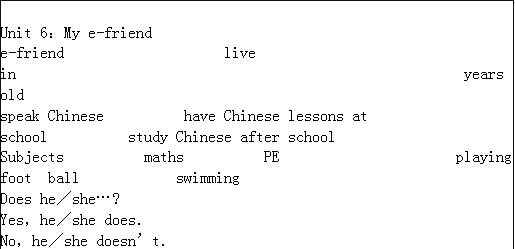第1题:
Liu Hui and Bai Mei are discussing who will be a safer driver after a party.
BAI MEI: Are you ready to take a___1__ in my new sports car
LIU HUI: Yes, but you have been___2__ beer, so you'd better let me drive.
BAI MEI: OK, I guess I will trust you. You seem to know what you are talking about. You sure do know the law.
LIU HUI: Get in the car. Don't forget to put on your seat belt.
BAI MEI: Do I have to It is a hassle.
LIU HUI: Seat belts save __3___, and it is the law. There can be no exceptions. It is better to be safe than sorry.
BAI MEI: I agree. When you are around, I just feel ___4__. You are a real gentleman.
LIU HUI: I am glad to hear that. Now, my beautiful passenger, where shall I drive you To a romantic forest A beautiful mountain Or just to my house for wine and dancing
BAI MEI: I just need you to drive me__5___ to my house. Thanks!
LIU HUI: Sometimes it is hard to be a gentleman.
第2题:
现有字母序列(D,W,A,J,C,Z,K,S,P),若采用快速排序的方法将这个序列按字母的升序进行重排,那么以第一个字母作为分界元素,完成第一次扫描的结果为【 】。
第3题:
对初始状态为递增序列的数组按递增顺序排序,最省时间的是插入排序算法,最费时间的算法是()
A.堆排序
B.快速排序
C.插入排序
D.归并排序
第4题:
若采用起泡排序法对序列16,12,4,25,6,10,14,50,8,24,45,27,39,22进行从小到大的排序,共要进行(59)次比较。
A.7
B.17
C.63
D.70
第5题:
String s="zhang san,li si,wang wu"; 按字母顺序对姓名
第6题:
顺序文件采用顺序结构实现文件的存储,对大型的顺序文件的少量修改,要求重新复制整个文件,代价很高,采用()的方法可降低所需的代价。
A、附加文件
B、按关键字大小排序
C、按记录输入先后排序
D、连续排序
第7题:
若采用起泡排序法对序列16,12,4,25,6,10,14,50,8,24,45,27,39,22进行从小到大的排序,共要进行(42)趟排序。
A.7
B.17
C.63
D.70
第8题:
LIU HUI:Hi, Mei.(1)Are you settling in well here in this city
BAI MEI:Well, thank you very much for asking. Everything is going OK.
LIU HUI:(2)Did they all join you living here BAI MEI:
Oh no. My parents have their own lives because my father has a grocery store. So he must take care of his business and my mother stays with him.
LIU HUI:Oh, I got it.(3)Are they in their school years
BAI MEI:Yes, they all attend the international schools here, but I still teach them Chinese at home.
LIU HUI:(4)What kind of food do you usually have with your family
BAI MEI:Everyone in the family loves Chinese food. But we have western food on some special occasions, you know, I have an American hubby.
LIU HUI:Right.(5)
BAI MEI:Pleasure.
A. Thank you for sharing this with me.
B. That's very interesting.
C. How is everything
D. How about your children
E. How is your family _Bai Mei: tells Liu Hui about her family_. …
第9题:
设有关键码序列(O, G, M, Z, A, N, B, P, X, H, Y, S, T, L, K, E),要按关键码值递增的顺序进行排序,采用堆排序法进行,经过初始建堆后关键码值A在序列中的序号是______。
第10题:
